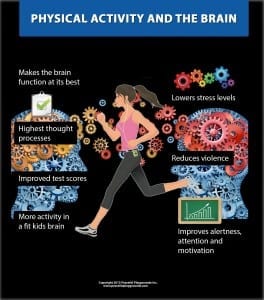For the first time in history, the kids we are teaching today are the first generation with a shorter life expectancy than their parents – 5 years shorter!
The report card
 Earlier this year the Active Healthy Kids Australia Report Card on Physical Activity for Children and Youth was released. Australia was awarded a D- for physical activity participation with the research finding that 80% of 5-17 year olds are not meeting the Australian physical activity guidelines of at least 60 minutes of exercise each day.
Earlier this year the Active Healthy Kids Australia Report Card on Physical Activity for Children and Youth was released. Australia was awarded a D- for physical activity participation with the research finding that 80% of 5-17 year olds are not meeting the Australian physical activity guidelines of at least 60 minutes of exercise each day.
The research team used an international ranking tool developed in Canada to measure against 12 grades which will be compared against 14 other countries.
D- for Overall Physical Activity Levels
B- for Organised Sport and Physical Activity Participation
D for Active Transportation (such as riding or walking to school)
D- for Sedentary Behaviours (screen time)
The science
The science is clear. Physical activity does more than create good health. It contributes to leadership, productivity and innovation. It lowers depression and crime, increases education and income levels, and generates return to businesses. It unleashes human potential, and this is what drives economies forward.
Physical inactivity on the other hand, can bankrupt economies. In 2008, physical inactivity in the US, China, India and the UK alone cost their economies $US200 billion.
The cost of physical inactivity or sedentary behaviours in Australia is equally alarming, with an estimated cost to the Australian economy of $13.8 billion in 2008. It is estimated that the cost in lost productivity due to physical inactivity equates to 1.8 working days per worker per year and it is estimated that 16,178 Australians will die prematurely each year due to physical inactivity.
The reality check
But let’s cut through the statistics and get down to what this really means … for the young people in our lives who stand to “lose” five years. The designedtomove initiative did just that and asked kids the question – what would they do with five extra years? Here’s what they said.
The challenge
When the Physical Activity Report card was released the Heart Foundation’s National Lead on Active Living, Associate Professor Trevor Shilton said the evidence can’t be ignored.
“We know what works. We need high quality, mandatory physical activity in our schools. We need to encourage and support our kids to stay active in everyday life – to be social and play outside, to walk and cycle in their neighbourhoods, do some household chores and limit hours of screen time.


